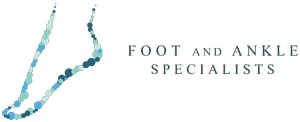By Timothy Hulst, DPM
Table of Contents
Introduction
Our recent blog posts on winter foot care discussed tips for proper maintenance and finding supportive winter footwear. The former touched on one of the most important parts of keeping your feet healthy when it’s cold outside: skin care.
Think about how you change your skincare routine for the dry heat and harsher winter conditions. Maybe you keep a hand lotion at the kitchen sink after washing dishes – it could be there year-round, but you likely use it more, or more of it, in the winter. Perhaps you use cuticle oil on your fingernails and deep conditioner or oils in your hair. You likely use lip balm more often in the winter and integrate more hydrating face masks, oils, or creams into your day or week.
Now think about what you do for your feet in the winter. Kudos to you if you’re doing anything at all! Feet are often the unsung heroes of our bodies, carrying us around all day but forgotten during our self-care regimens.
Skin care for your feet doesn’t have to be lavish or time-consuming – though we highly recommend indulging if you are inclined. The foot skincare tips we’ve provided below range from basic to more spa-like. Add any of these home care treatments, even one of them, to your daily or weekly winter skincare routine, and you will reap the benefits. Your feet will carry you through the winter with ease.
Tips For Your Feet
- Wash your feet daily, being sure to wash and dry thoroughly between your toes.
- Use a pumice stone or foot scrub to smooth out natural calluses and dry skin, which are often worse in the winter due to dry heat. Be careful not to overdo it as scrubbing too hard or too often may irritate your skin. Ask your doctor if you have concerns – we are happy to answer your questions.
- Give yourself a foot bath with Epsom salts to give your feet a chance for an extra soak. Use essential oils (suggestions include tea tree oil, lavender, lemon, and mint) for a spa-like treat at home.
- Moisturize your feet, but not in between the toes. Use a moisturizer immediately after a wash or bath and scrub, when your skin barrier is open to receiving moisture and hydration before sealing itself off, for maximum results. Apply your moisturizer in circular motions from your heel to your toes as a form of foot massage that will help with circulation.
- One form of moisturizer can come in the form of a hydrating foot mask, which should also be applied after your shower or foot bath. There are many options for foot masks, including homemade and store-bought, individually packaged or in bulk format. Some of these are left on for 30 minutes to an hour, while others can be left on overnight beneath socks, allowing your skin to soak in the moisture while you sleep. Even basic, store-bought emollients like Aquaphor be used as a hydrating mask when used in this way. The next morning, simply rinse your feet and pat them dry. Note: Beware that some masks and creams may discolor your socks.
- One other type of foot mask is the foot peel mask. These exfoliate the dead skin on the feet, which will eventually shed off. Often these masks are meant to stay on for an hour or so, though the skin may shed over the next three to seven days. Be sure to read instructions and plan accordingly.
Tips For Toenails
- Clean beneath your toenails.
- Trim your toenails straight across, but not too short!
- Note that people with diabetes should get their toenails cut by a foot specialist.
- Toenails with a tendency to pinch or grow should be handled by a professional.
- Use oil on your toe cuticles. Keeping your cuticles hydrated will help them stay strong and will prevent snags, breaks, and hangnails. Coconut oil works well because it’s antibacterial and antimicrobial.
- Skip the toenail polish. While your toes are bundled away in socks and boots, give your nails a break. This is helpful to your foot health for three reasons. First, leaving your toenails bare allows them to soak up creams and lotions better. Next, some nail polishes contain formaldehyde, which can turn your nails yellow – the time off will enable discolored nails to grow out. Finally, many nail polish removers can lead to nail dryness.
Conclusion
These tips are suggestions and starting points. If you’re having issues with the skin on your feet or with your toenails and want to speak directly with our specialized physicians, please contact us to set up an appointment. We’re happy to help with cracks and fissures or nail and callus maintenance and to provide you with personalized care and treatment. Keep in mind that dry, cracked skin is more prone to bacterial and fungal infections and should be treated right away before the condition worsens.
If you’re looking to relax and get pampered, either after treatment with us or otherwise, consider making an appointment at Cure – The Physician’s Salon, which adjoins our Grand Rapids Southeast location. Cure ensures safe sanitation levels through the use of medical-grade sterilizing techniques and processes overseen by board-certified podiatrists. Their environment protects those at high risk for infection, including clients living with diabetes, compromised immune systems, vascular disease, or nerve damage.

